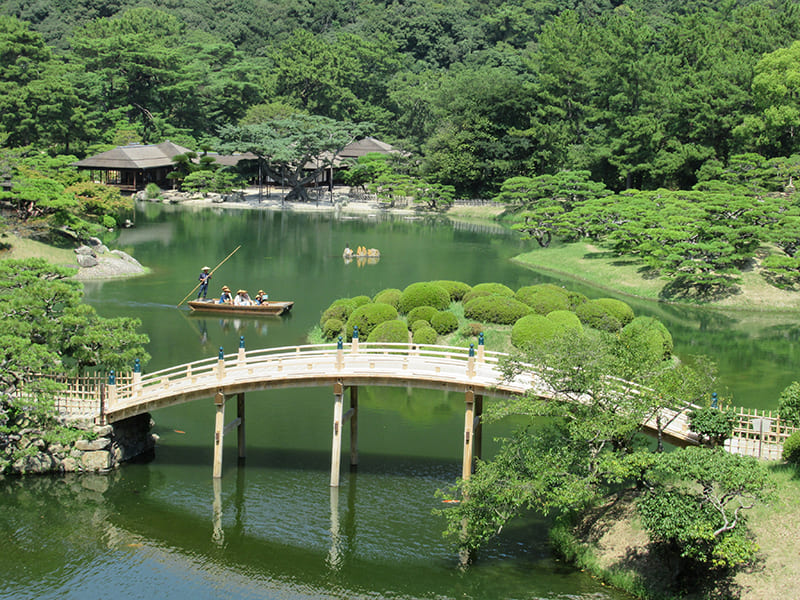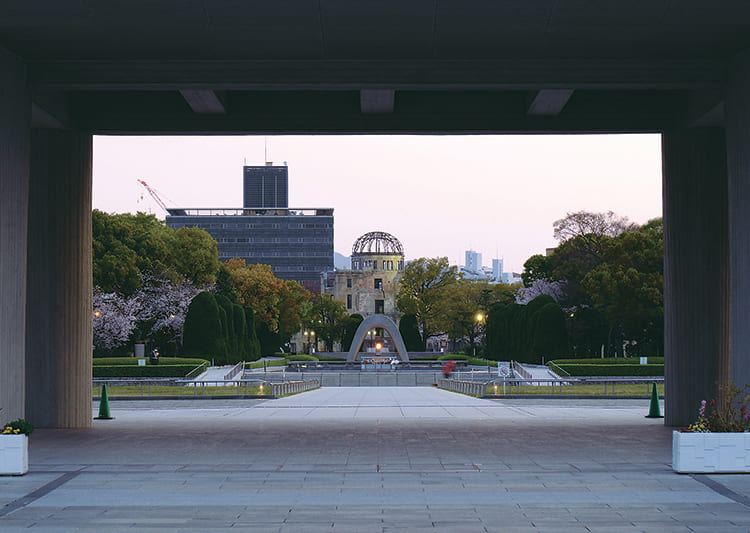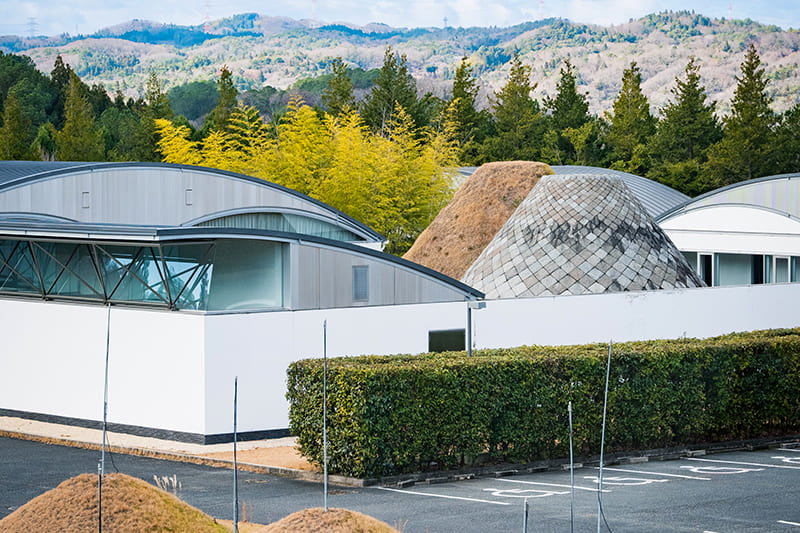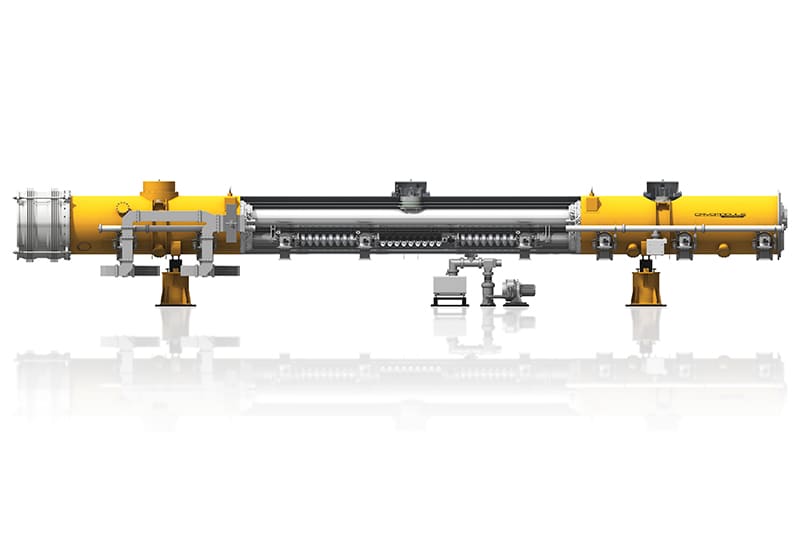February 24, 2023
SPring-8 unites best of Japan’s science and tech
SPring-8
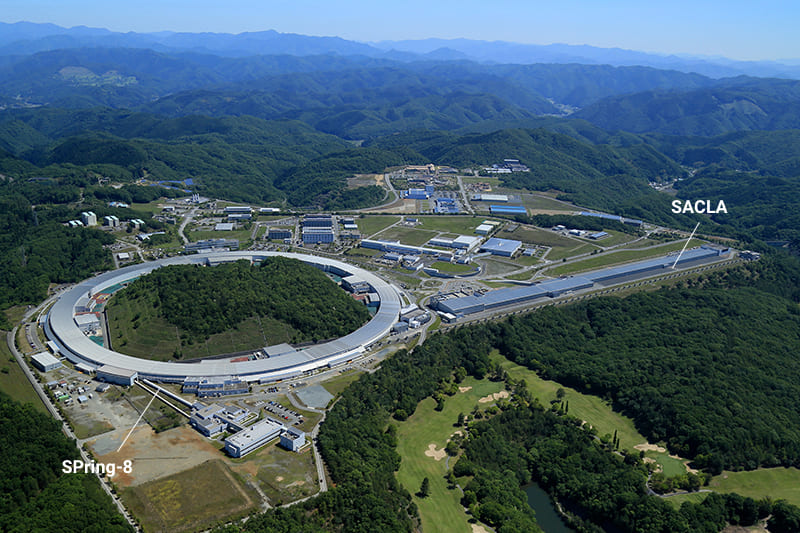
PROCEDURES FOR USING SYNCHROTRON RADIATION IN AN EXPERIMENT
1.Electrons are generated at the electron gun.
2.Those electrons are accelerated to 99.9999998% of the speed of light using a high-frequency electric field.
3.The electrons are kept rotating in the storage ring.
4.The electron trajectory is bent using magnets, and synchrotron radiation is extracted.
5.X-rays extracted from the synchrotron radiation are applied to the experimental sample, and the obtained data is analyzed.
SPring-8
A large-scale synchrotron radiation facility that commenced operations in 1997. It is operated by RIKEN. The total construction cost was ¥110 billion ($1 billion at the time). The site area is 141 hectares (about 30 times the size of Tokyo Dome). The circular storage ring has a circumference of 1,436 meters. High quality electron beams are generated by accelerators, and powerful X-rays extracted from them are used to observe substances at the atomic level. The co-located SACLA is an X-ray free-electron laser facility that started operations in 2012. Linear in form and with a total length of 700 meters, SACLA is used to observe the instantaneous movements and changes of atoms and molecules that cannot be captured by SPring-8.
Location: 1-1-1 Koto, Sayo-cho, Sayo-gun, Hyogo Prefecture.
Free 90-minute facility tours available for groups of 15 or more. Reservation required.
http://rsc.riken.jp/eng/site_tour/index.html
Japan is renowned for its science and technology, and one of its proudest research facilities is SPring-8, a large-scale synchrotron radiation facility at Harima Science Garden City in Hyogo Prefecture. Established with the goal of “using powerful X-rays to observe matter at the atomic level,” SPring-8 supports research spanning medicine, product development, archaeology, environmental research, space development and more. And on many occasions the results of that research has directly impacted our lives.
One example is fuel-efficient tires, a key issue for reducing carbon emissions. To improve tires’ efficiency, it is necessary to reduce their rolling resistance while at the same time maintain sufficient grip to prevent skidding. SPring-8 was used in balancing these competing needs. Materials such as rubber, the main component in tires, could be observed at the previously impossible nano- to micrometer scale. As a result, it was possible to pinpoint where energy loss was occurring, and then develop new materials and products with higher performance.
Likewise, understanding changes that occur just 100 to 200 microns beneath the surface of the human tooth made it possible to develop chewing gum that can repair early tooth decay. Research was also conducted into lithium-ion batteries used in automobiles to improve their performance. Other unusual applications include the observation of particles brought back from the asteroid Itokawa by the spacecraft Hayabusa, which completed its seven-year, 6-billion-kilometer journey in 2010. SPring-8 also helped in the detection of poisonous substances used in the 1998 Wakayama curry murders.
The idea of building SPring-8 was first raised in the 1980s. At the time, large-scale synchrotron radiation facilities were being built in Europe and the United States. In Japan it was decided that one should be made in the Kansai region because synchrotron radiation equipment was already concentrated in the Kanto region. In 1998, the RIKEN research institute and the Japan Atomic Energy Agency formed a joint team. The planned European facility would have an electron acceleration energy of 6 giga electron volts, while the U.S. project was ahead with 7 GeV. In order to achieve the world’s highest performance, it was decided that the Kansai project would use 8 GeV, capable of researching all elements. The “8” in SPring-8 comes from this 8-GeV capacity.
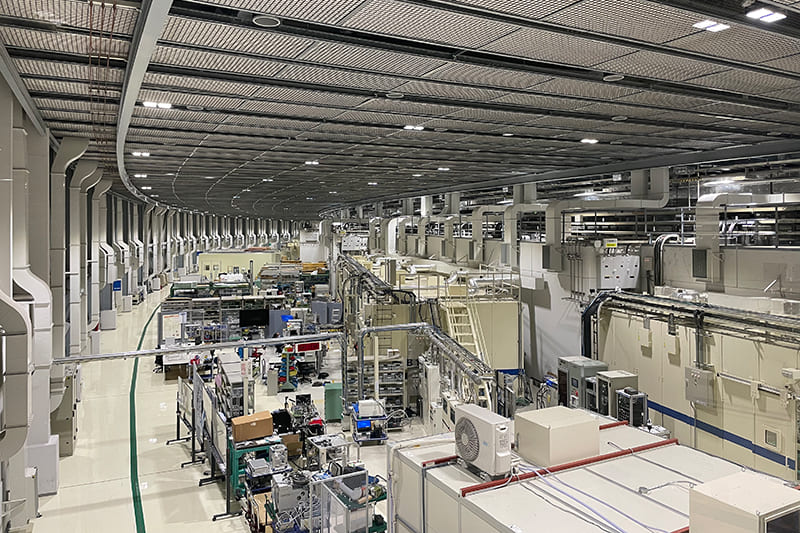
PHOTOS: MINAMI NAKAWADA
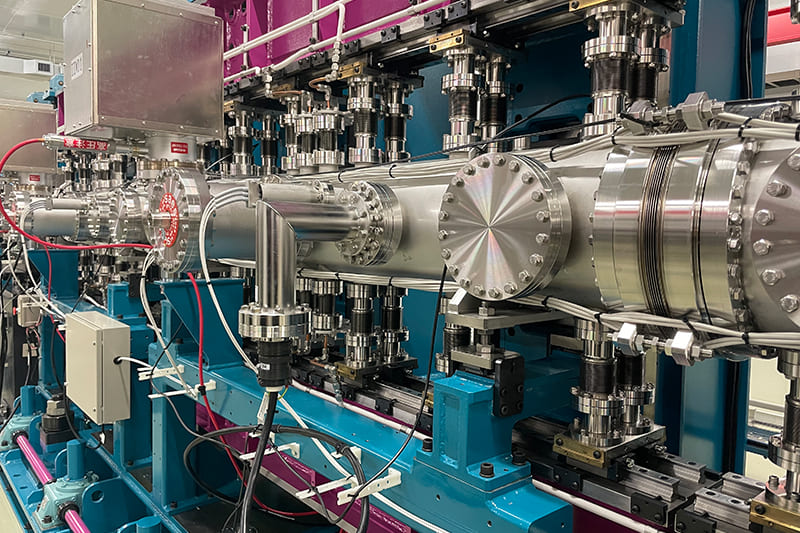
PHOTOS: MINAMI NAKAWADA
Harima Science Garden City was selected as the site in 1989, the budget was officially approved in 1990, and construction began in 1991. Originally, one of the reasons for the selection of the site was its solid bedrock, which would provide the stability necessary to run a synchrotron radiation facility. But ultimately, that bedrock also made the construction work difficult.
Precision accelerators are vulnerable to even the slightest shrinkage of buildings that might occur due to fluctuations in temperature and humidity. To address this, the accelerator and the building were physically separated from each other. The building housing the circular storage ring was also designed with great care, by separating the floors of the concentrically arranged experimentation halls and maintenance roads, so that vibrations and deformations from one would not affect the other. Experimental equipment such as accelerators is designed to make the invisible observable, so it makes sense that they are made with the most advanced construction technologies.
Some of these facilities are now open to the public. They make for an inspiring visit, showcasing Japanese ingenuity as well as the science and technology that support it.
日本が誇る科学技術の粋を集めた〈SPring-8〉。
兵庫県の「播磨科学公園都市」にある大型放射光施設〈SPring-8〉は、科学技術立国・日本が世界に誇る研究施設だ。“強力なX線を使って原子レベルで物質を観察する“ことを目的に、その研究範囲は医学・製品開発・考古学鑑定・環境調査・宇宙開発など幅広い分野に及んでいる。その成果は私たちの生活に直接関係しているものも多い。
例えば、環境問題にも関わる低燃費タイヤ。タイヤの燃費向上には、転がり抵抗(摩擦力)を小さくしなければならないが、その反面スリップなどを防ぐグリップ性能も求められる。この2つの相反する性能を両立させるために用いられたのが〈SPring-8〉だ。これまで観察できなかったサブマイクロメートル(1万分の1㎜)単位で主原料のゴムをはじめとした材料を観察でき、どこにエネルギーロスが生じるかを突き止め、新素材を開発。性能の高い、新たな製品を生み出すことができた。
この他にも、探査機「はやぶさ」が小惑星イトカワから持ち帰った粒子の測定や、1998年和歌山県毒物カレー事件での毒物検出にもこの施設の技術が用いられた。
Return to Sustainable Japan Magazine Vol. 21 article list page

